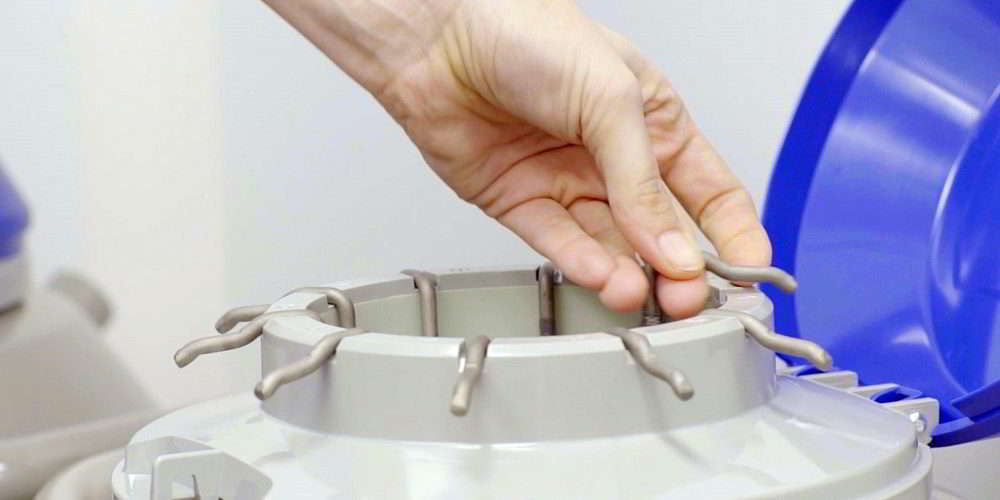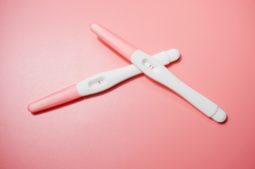

In 2005 IVI became the first clinic in Europe to use vitrification, a technique that dramatically improves egg survival rates.
Women’s eggs are difficult to freeze – they are the biggest cell in the body and contain a large amount of water. Previous freezing techniques had a low egg survival rate because the water inside the cell created crystals that destroyed it. 90% of the eggs survive the vitrification process and 98% of these eggs then survive the thawing process.
IVI also achieved the first pregnancy in Europe using vitrified eggs in 2006.
Who should consider egg freezing?
There are a number of reasons why a woman might decide to preserve her fertility, such as:
- Medical conditions. If you have a condition or are undergoing treatment that could affect your fertility and ovarian function, such as chemotherapy or radiotherapy
- Social reasons. For women who wish to postpone motherhood for social reasons, preserving their eggs for the future, providing more flexibility around their fertility decisions
- Situations of risk. For instance, during the Olympic Games in Brazil, some athletes decided to preserve their fertility as they were travelling to an area with the Zika virus
When should I freeze my eggs?
This is a personal decision, but in general terms, the younger, the better. At IVI, we recommend women freeze their eggs before the age of 35. After the age of 35, genetic and biological changes mean that the quality of eggs decreases and egg production declines.
The egg freezing process
- Assessment
The first step is a blood test to assess the woman’s ovarian reserve. It’s also common practice to test for infectious diseases such as HIV and Hepatitis B and C.An initial ultrasound checks that the ovaries are at rest and that stimulation can begin.
- Ovarian Stimulation
First the production of follicles is stimulated. In a normal cycle, a woman releases one egg, but medication is used to stimulate the follicles to produce a larger number of eggs in one cycle. The drugs normally used are either FSH or HMG (which contains FSH and LH) and both stimulate egg follicle growth.Usually the medication starts on the first day of the menstrual cycle and has to be taken daily for about 10-12 days. It is administered as an injection into the abdomen. The needle is really thin so it shouldn’t be painful. A nurse will explain how you should do it. There are also videos available on our IVI International Youtube channel that explain all the steps.
During this time, egg development is closely monitored through vaginal ultrasounds and blood tests. These checks are repeated regularly until the follicles are more than 18mm in size and the hormone levels in the blood reach the right levels. It is then time to trigger ovulation. There isn’t a fixed day to take the final medication, it depends on how the follicles develop. Each woman and each cycle will be different.
- Egg retrieval
This procedure is scheduled for 36 hours after taking the last medication.The retrieval is done using a needle which is introduced through vaginal ultrasound. The needle aspirates the liquid inside the follicles, which contains the eggs. This procedure is done under a general anaesthetic and lasts 10-15 minutes.
After the extraction, the patient might experience some mild side effects, such as spotting and tenderness. These effects are temporary, but you should arrange to have someone collect you after the procedure and you are advised to rest that day.
- Vitrification
Not all of the extracted eggs will have matured; those that haven’t will not be used.The egg contains a large amount of water which, when frozen, can create damaging crystals, so the first step is to dehydrate the egg and replace the water with cryoprotectants.
The eggs are then placed in a straw – a small tube – for freezing. These straws are cooled rapidly, by immersing them in liquid nitrogen, which instantly freezes the eggs. The tubes containing the eggs go from about 25°C to -196°C in just 2 or 3 seconds. The combination of cryoprotectants and ultra-cooling is the key to success. Using this technique prevents the fluid in the egg turning to ice, which can cause damage during thawing.
Finally, the straws are labelled and stored in a nitrogen tank.
Not all the extracted eggs will make it to the nitrogen tank and not all of them will survive the thawing, but the odds are quite good: 90% of the eggs survive the vitrification process and 98% of the frozen eggs survive the thawing process.
The final number of vitrified eggs also depends on the woman’s egg production. The more eggs produced, the more chances of success in the future. Some women don’t produce many eggs in a cycle and sometimes a second round might be recommended.
- Getting pregnant with vitrified eggs
When a woman decides to use her eggs, vitrification has to be reversed. The egg is warmed back to a normal temperature and rehydrated. An egg can be injected with sperm 3 or 4 hours afterwards.During the vitrification process the zone pellucida – the egg’s outer layer – hardens so it’s necessary to fertilise it through ICSI (a technique in which the sperm is injected directly into the egg). It is then transferred to the uterus as an embryo.
How long can the eggs remain frozen?
There is no evidence that egg quality decreases over time. The average period is 10 years, but it’s a decision to be made between the patient and the clinic.
How many eggs should I store?
It is considered that 8 is a sufficient number, but the more you freeze, the more chances of success you have.
Egg freezing cost
To find out the cost of preserving your fertility with IVI, visit our Pricing page.
For more information on the evidence-based medicine available at our IVI UK clinics, please see our treatments section on our website. Or, you can call our friendly UK Patient Support Services team today for more information and to arrange an initial consultation where you can discuss your issues with an expert and can explore the most suitable treatment to help you have your baby.
Alternatively, you can send us an email and one of our Patient Support Services team members will be in touch shortly.





Comments are closed here.